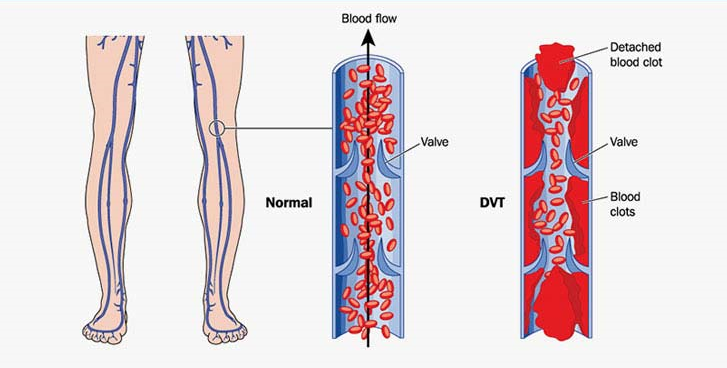Deep Vein Thrombosis (DVT) is the formation of blood clot within a deep vein, most commonly in the leg or pelvis but can occur elsewhere in the body. Contrary to superficial veins that can be visible beneath the skin and may result in varicose veins, the deep veins are larger in caliber and located within the muscles. Deep Vein Thrombosis is usually the result of an underlying condition or risk factor and may cause pain, swelling or skin discoloration, but often occurs without giving noticeable symptoms (silent DVT).
Why does DVT occur and what are the consequences if left untreated?
Blood clots may form when something obstructs, slows or changes the blood flow in the vein. Stagnation or thickening of blood can lead to thrombosis. The longer the period of blood pooling or hypercoagulability, the more likely is blood clotting. A DVT may resolve spontaneously, as the thrombosis is dissolved by natural process or progress causing serious complication.


